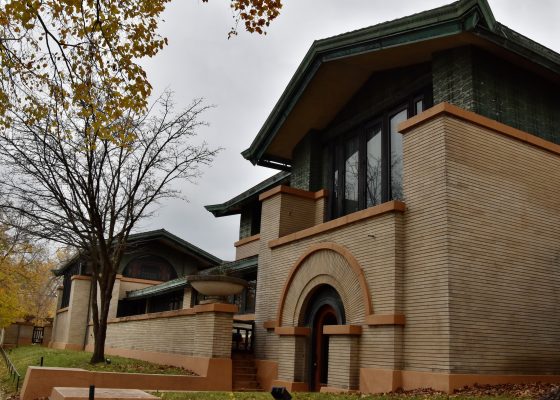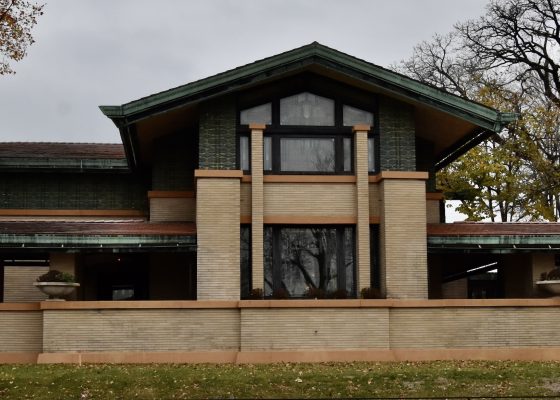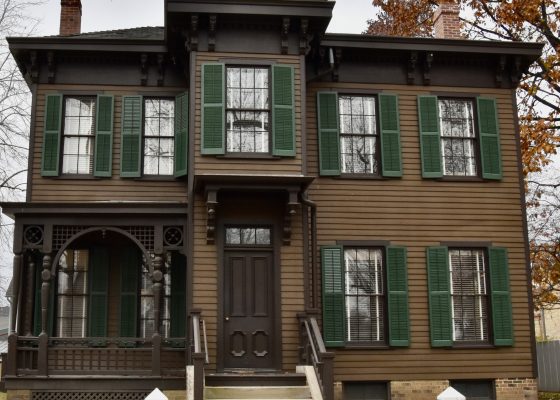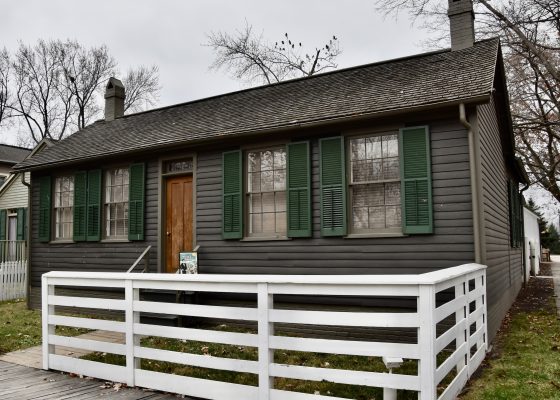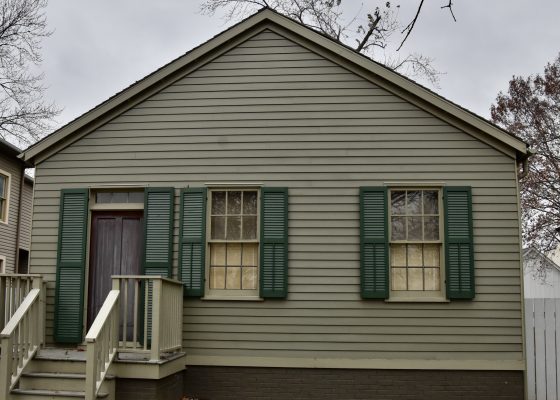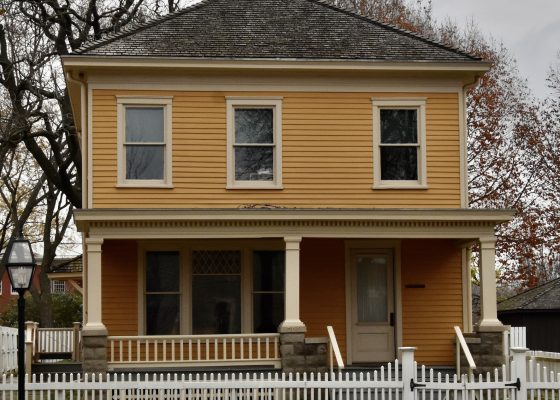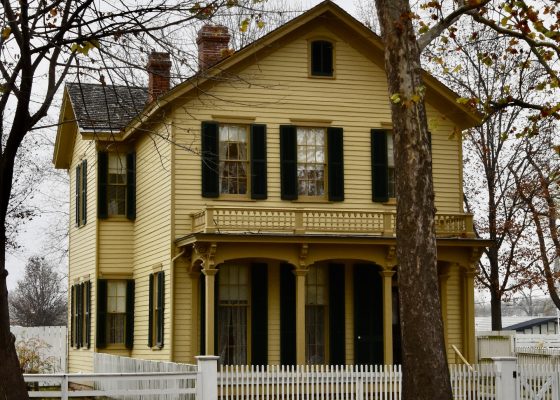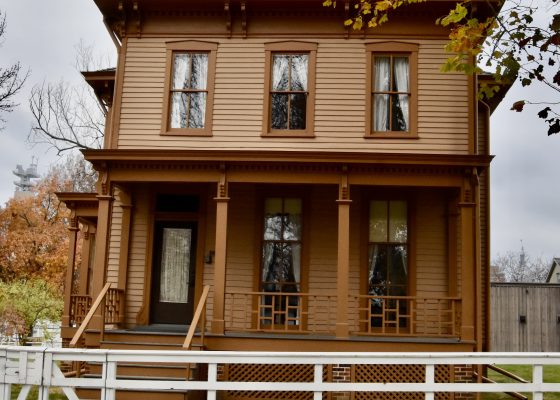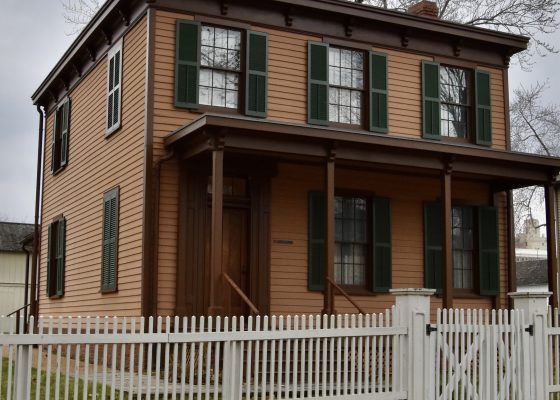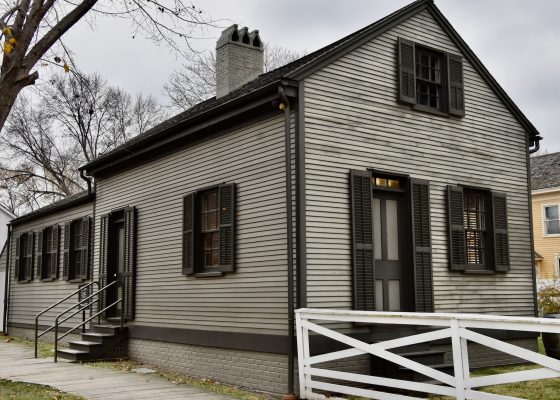Lincoln Home and Tomb in Springfield, Illinois
As Alison and I continue our journey back to Nova Scotia from Arizona, we have just a few more stops to make. Our last one was at Gateway Arch National Park in St. Louis, Missouri. Our next will be in the Illinois state capital city of Springfield where we will have a guided tour of the Abraham Lincoln home followed by a quick stop at his tomb. While Americans are currently struggling under the man who will undoubtedly be remembered as the worst Republican president in history, it is a bit of an irony that the first Republican president believed in a set of principles that were diametrically opposed to those espoused by the MAGA hats today. Join us as we learn more about the family life of Abraham Lincoln and his time in Springfield.
History of Springfield, Illinois
Springfield was founded in 1820 by one John Kelly who was followed by settlers from Virginia, Kentucky and North Carolina. Their southern sympathies led them to name the place Calhoun, after the South Carolina senator John C. Calhoun known for his flamboyant and inflammatory pro-slavery and State’s Rights speeches. By 1832, with Illinois now a staunchly free state and Calhoun becoming more strident than ever in his push for what would eventually become a civil war, the name was changed to the more neutral sounding Springfield. In 1831 young Abraham Lincoln arrived in nearby New Salem where he beavered away at many callings including boatman, rail splitter, postmaster, store owner and finally a volunteer in the Illinois Militia which took part in the brief, but bloody Black Hawk War in 1832. He acquitted himself well as a manager of troops, but saw no action. Others who were involved in quelling this final Indigenous attempt to regain tribal lands in the Illinois area were future president Zachary Taylor, President of the Confederacy Jefferson Davis and legendary general Winfield Scott. For his part Black Hawk did get a hockey team named after himself.
Despite being a jack-of-all-trades, Lincoln did find time to study law at New Salem and in 1836 got his law license without ever attending law school or passing a bar exam. He also found the time to run for public office, losing in 1832 and winning a seat in the Illinois General Assembly in 1834 which at that time was located in Vandalia, Illinois’ second state capital.
In 1837 Lincoln moved to Springfield and here began his career as a fabled orator, arguing legal cases on a great variety of matters including murder and even appearing before the United States Supreme Court. He also continued his political career as a state legislator and in 1837 was instrumental in getting a bill passed that moved the state capital from Vandalia to Springfield which happened in 1839 with the opening of what was then a grandiose capitol building. Lincoln spent his last term there as a state assemblyman from 1840-1842. This is where he gave his famous ‘House Divided’ speech in 1858 and where he lay in state after his assassination in 1865. While it was replaced by the current capitol building in 1876, it is a State Historic Site, but currently closed for renovations.
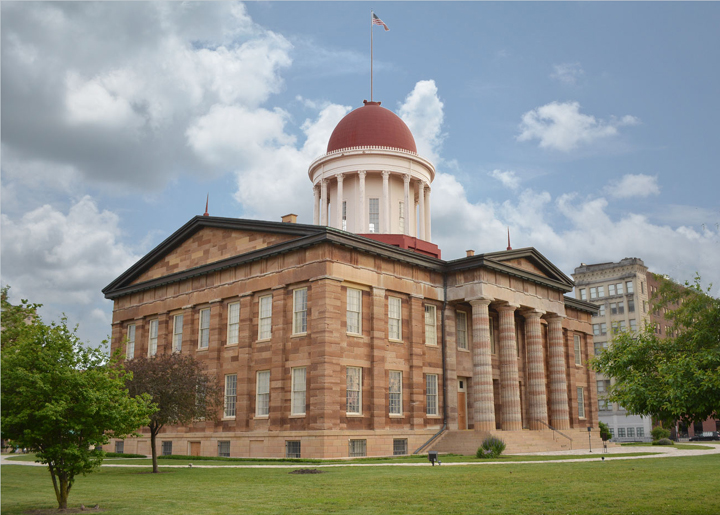
The new capitol building features a dome that is higher than the United States capitol and is visible from almost everywhere in central Springfield.
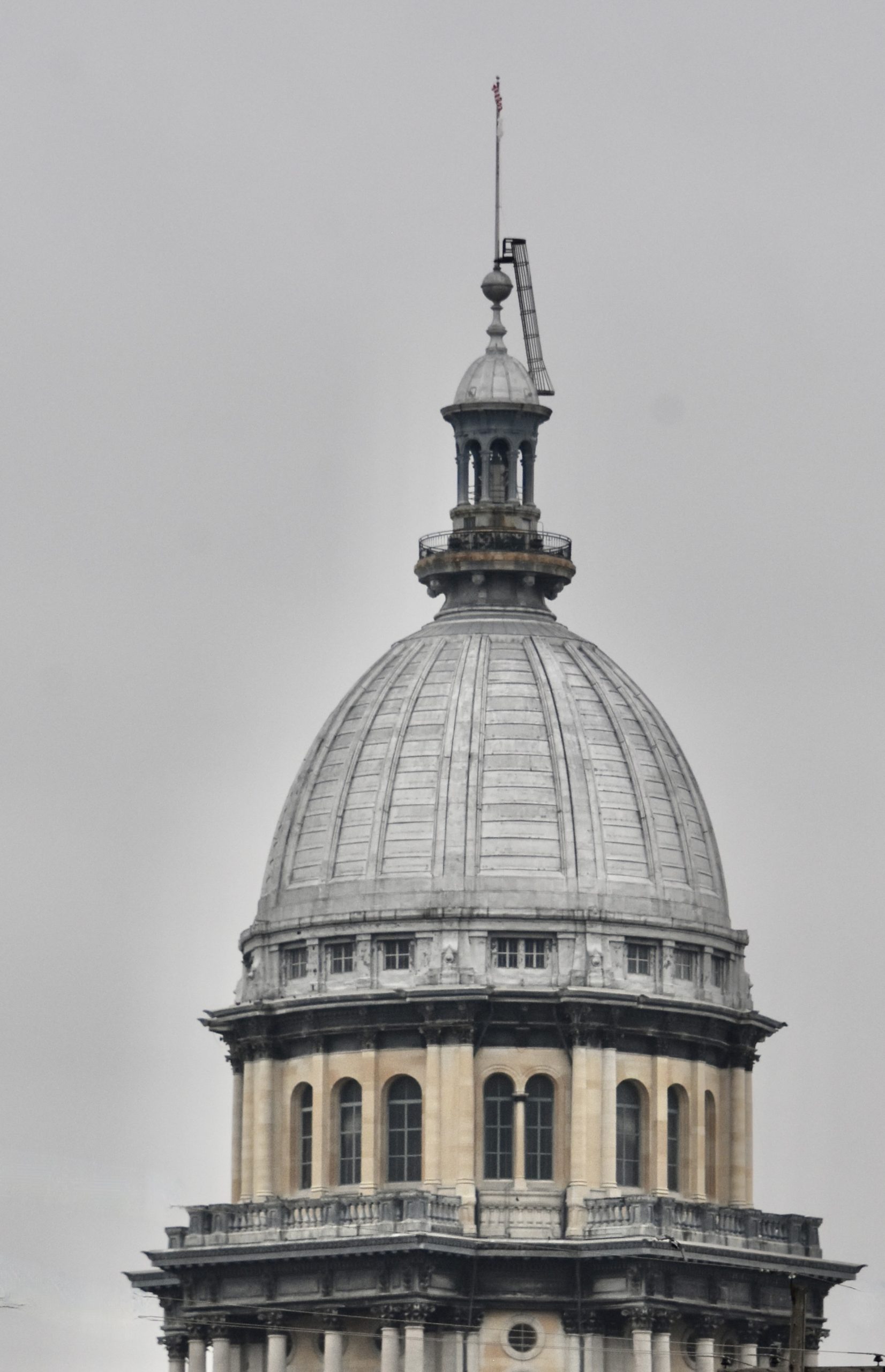
Now with that background let’s visit the Lincoln home where he lived from 1844 to 1861 when he left for the White House, never to return.
Lincoln Home National Historic Site
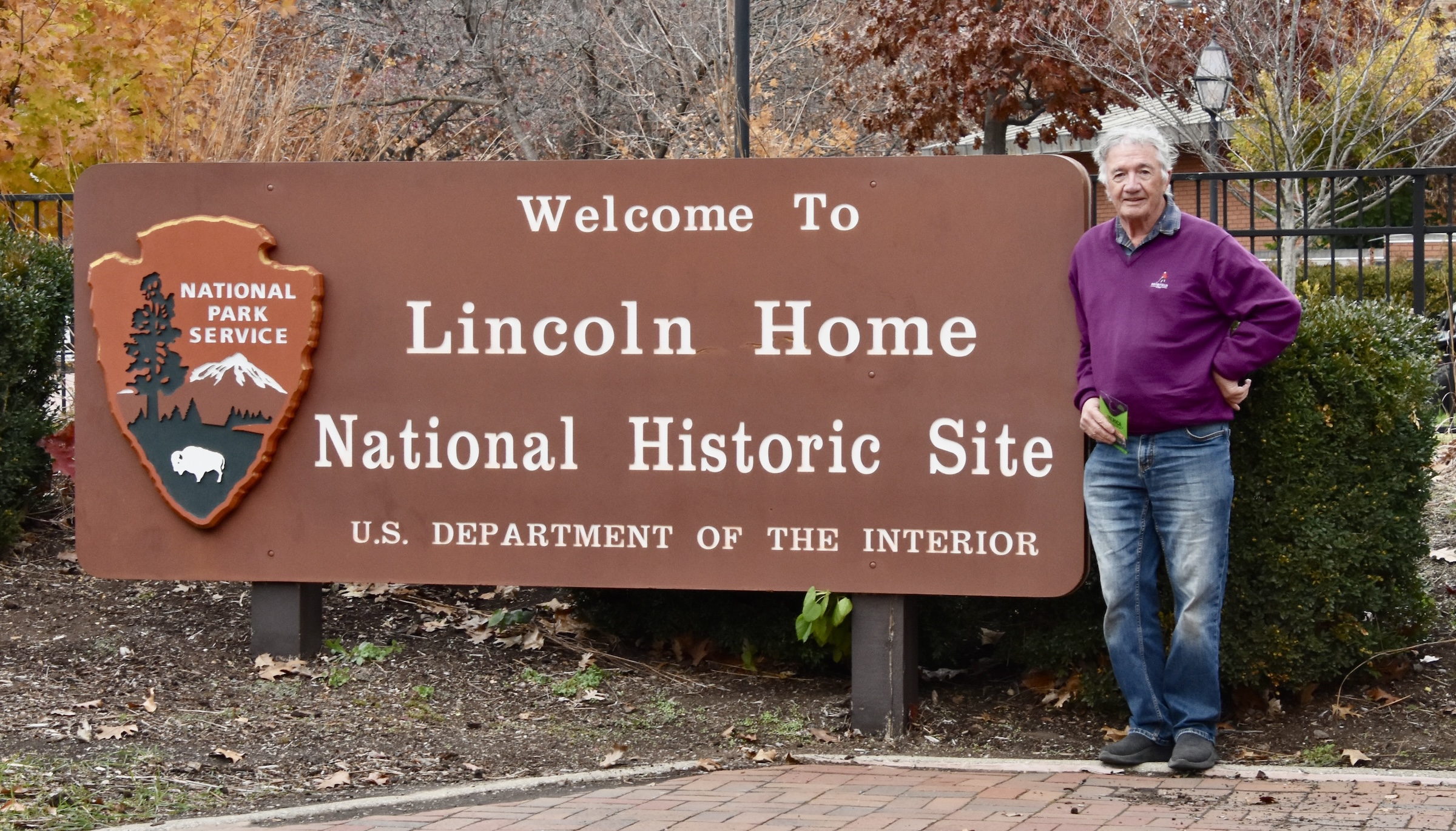
Visiting the Lincoln Home NHS in November 2024 we found a virtually empty parking lot adjacent to the small visitor center.
Here is a map of the Lincoln Home NHS which includes not just the original Lincoln home, but the entire neighbourhood as well. The houses that are in black are open to the public while the red stars mark outdoor exhibits.
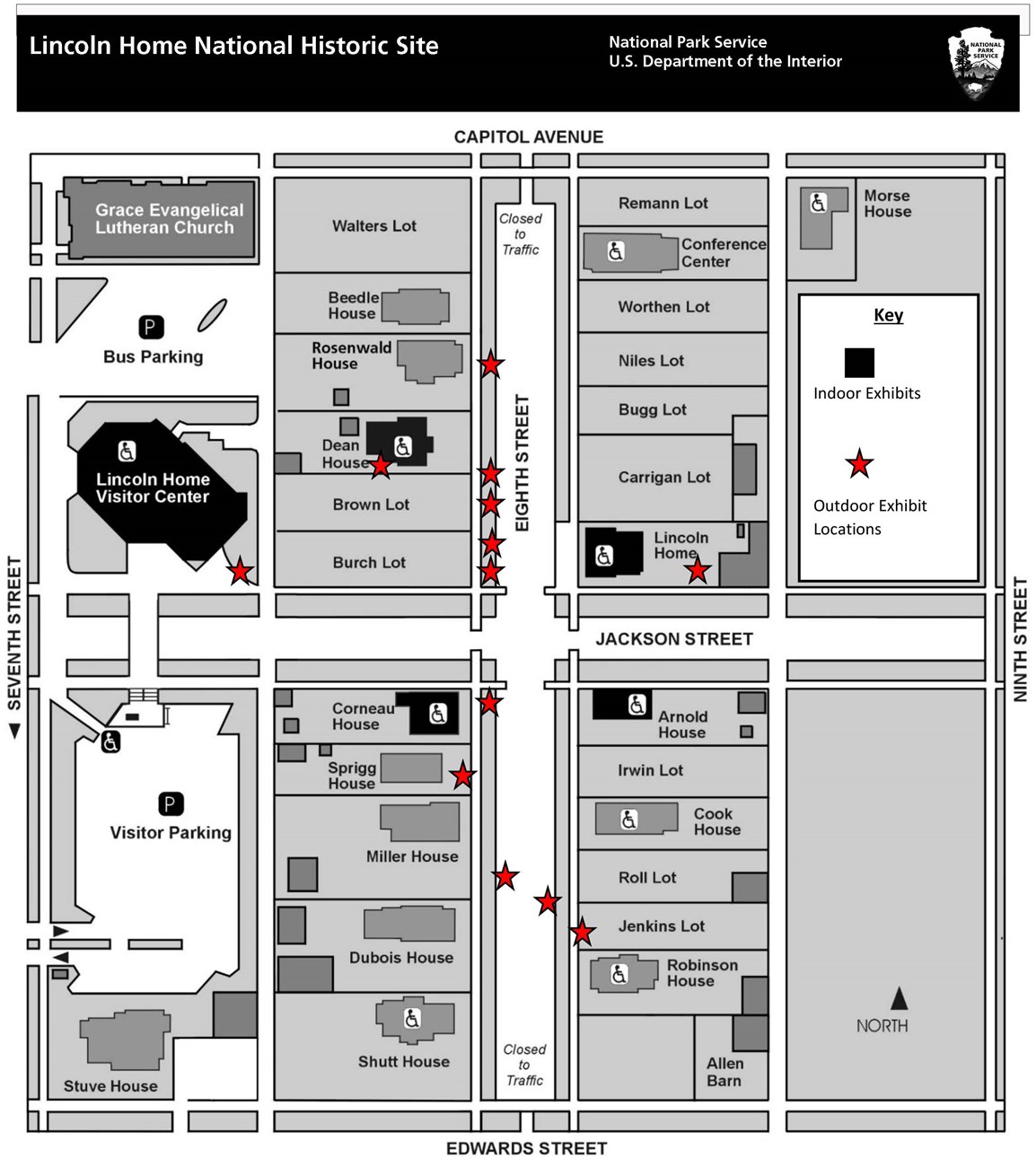
While there is a modest fee for parking, there is no cost to visit the Lincoln Home NHS. After parking, you enter the NHS through the Lincoln Home Visitor Center where there are a number of exhibits and multimedia displays including a scale model of Springfield in 1860. It is here you get your free tickets for a guided tour of the Lincoln Home which is the only way you are allowed inside. We were lucky in getting on a tour that was leaving almost immediately. The tours are about 20 minutes after which you are free to wander about the rest of the NHS on your own including visiting the other three homes open to the public.
This is the only home Abraham Lincoln ever owned and it is in what was a decidedly upscale neighbourhood of Springfield befitting the family of an up and coming lawyer and politician.
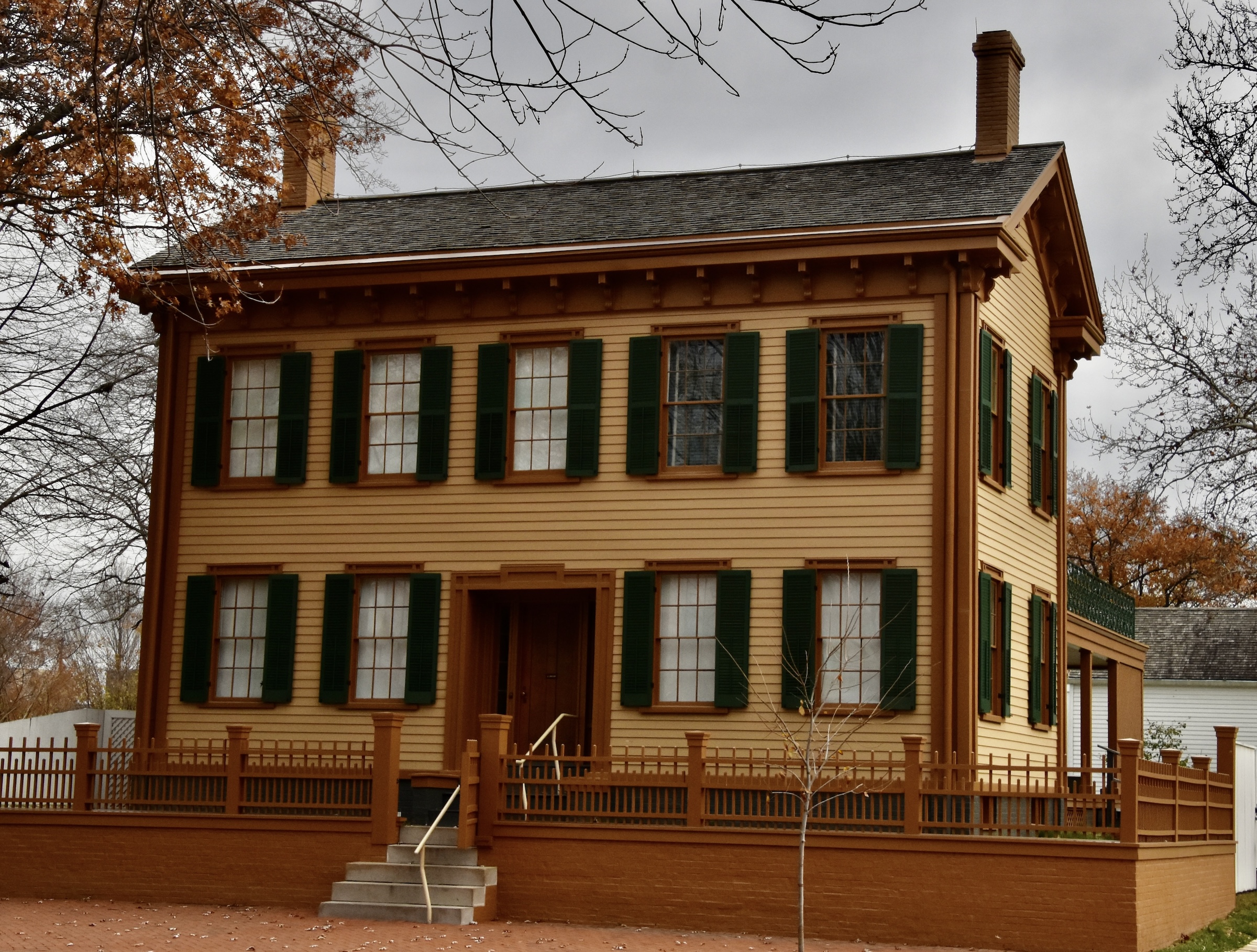
Looking at the Lincoln home from the side you can see that it has a Sizeable extension at the back.
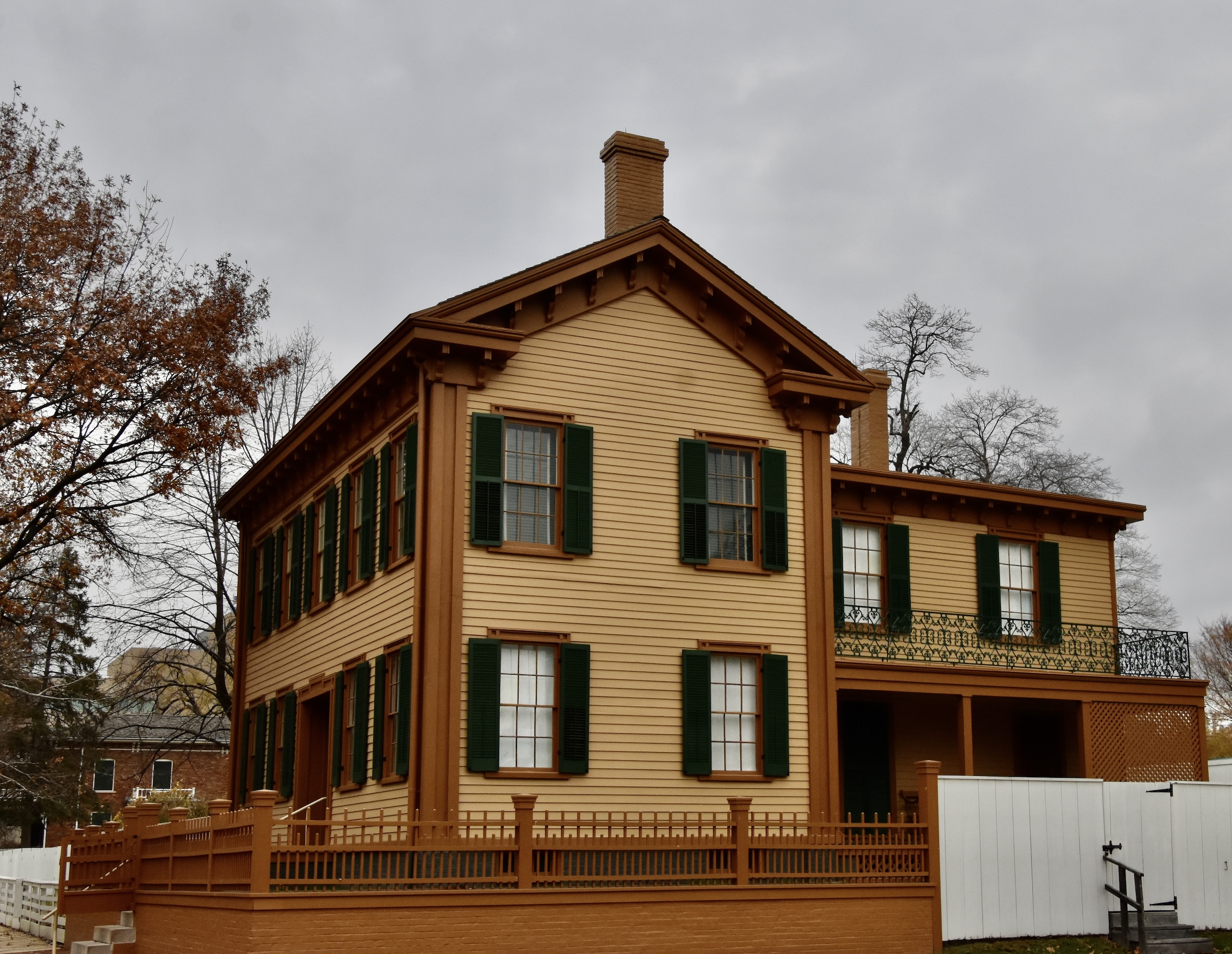
The house was built in 1839 by Reverend Charles Dresser who presided over the wedding of Abraham Lincoln and Mary Todd in 1842. He sold the house to the Lincoln’s in 1844 for $1,500.00. At that time it had only five rooms, but over the course of the Lincoln’s occupation was expanded to twelve rooms to accommodate the growing family. Three of the four Lincoln children were born here and Eddie, the second oldest, died of consumption here in 1850.
Although they thought they would return to the Lincoln home after the Presidency that never happened and it was eventually inherited by Robert Todd Lincoln who donated it to the State of Illinois on the condition that it be maintained and open to the public at no charge. In 1971 ownership was transferred to the National Park Service which administers it today. The Lincoln home is presented as it was in 1860 and includes a number of original furnishings and other Lincoln related items.
Let’s go inside.
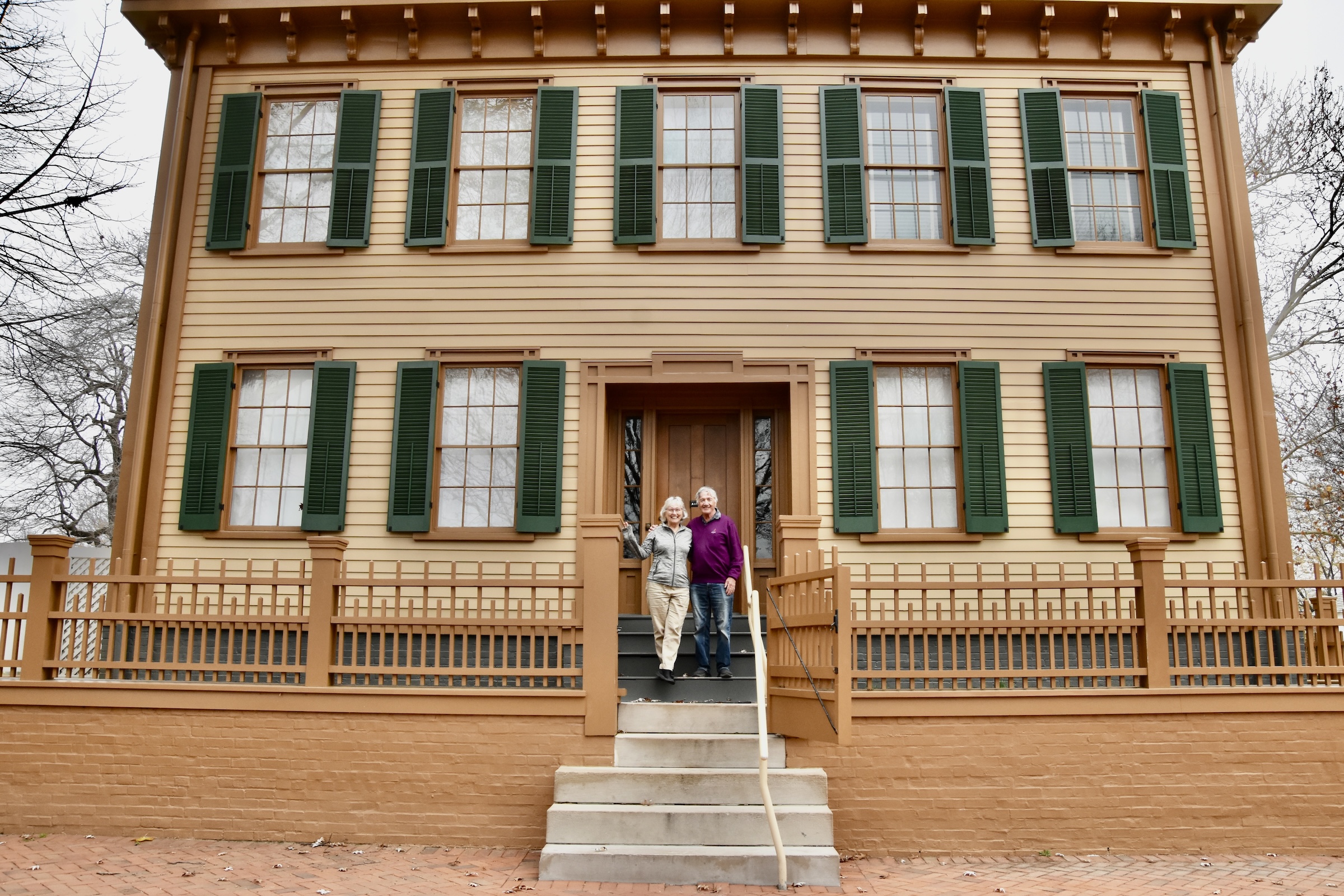
The guided tour is led by very knowledgable park rangers who can answer just about any question about any of the furnishings and knickknacks in the Lincoln home.
As an aspiring politician Lincoln had to entertain and cajole the town and state bigwigs which he did in two parlor rooms that run the entire length of the left side of the ground floor. This is a photograph of the front parlor from the NPS website.
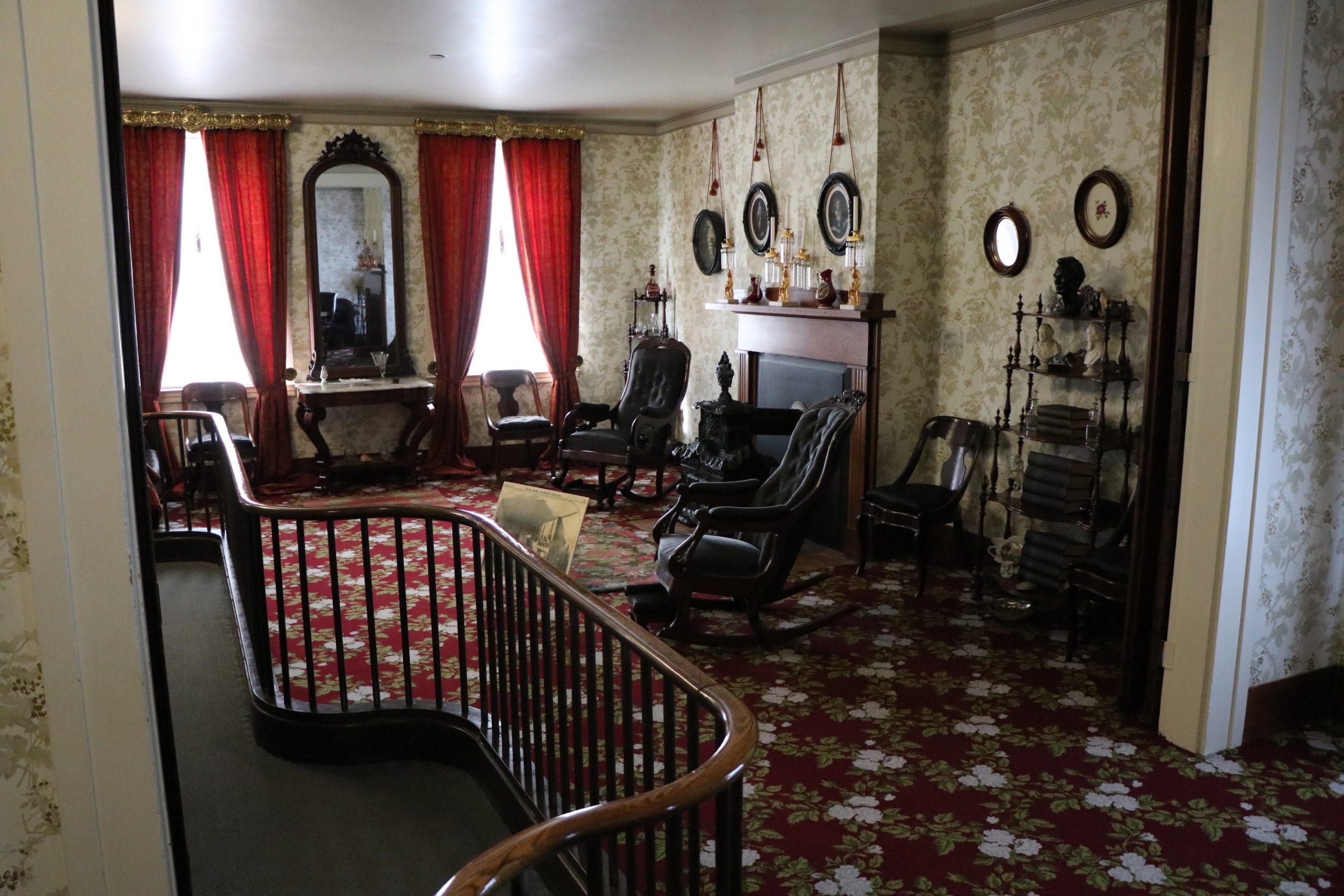
He and his guests would sit in rocking chairs in the style that is forever associated with his name. He was seated in a somewhat similar rocking chair in Ford’s Theatre on that fateful night on April 14, 1865 when he was assassinated by the actor John Wilkes Booth. You can see that very rocker today in the Henry Ford Museum in Dearborn, Michigan.
Some of the original furniture includes this huge mahogany settee in the back parlor which, despite being over 165 years old, looks as fresh as the day it was delivered.
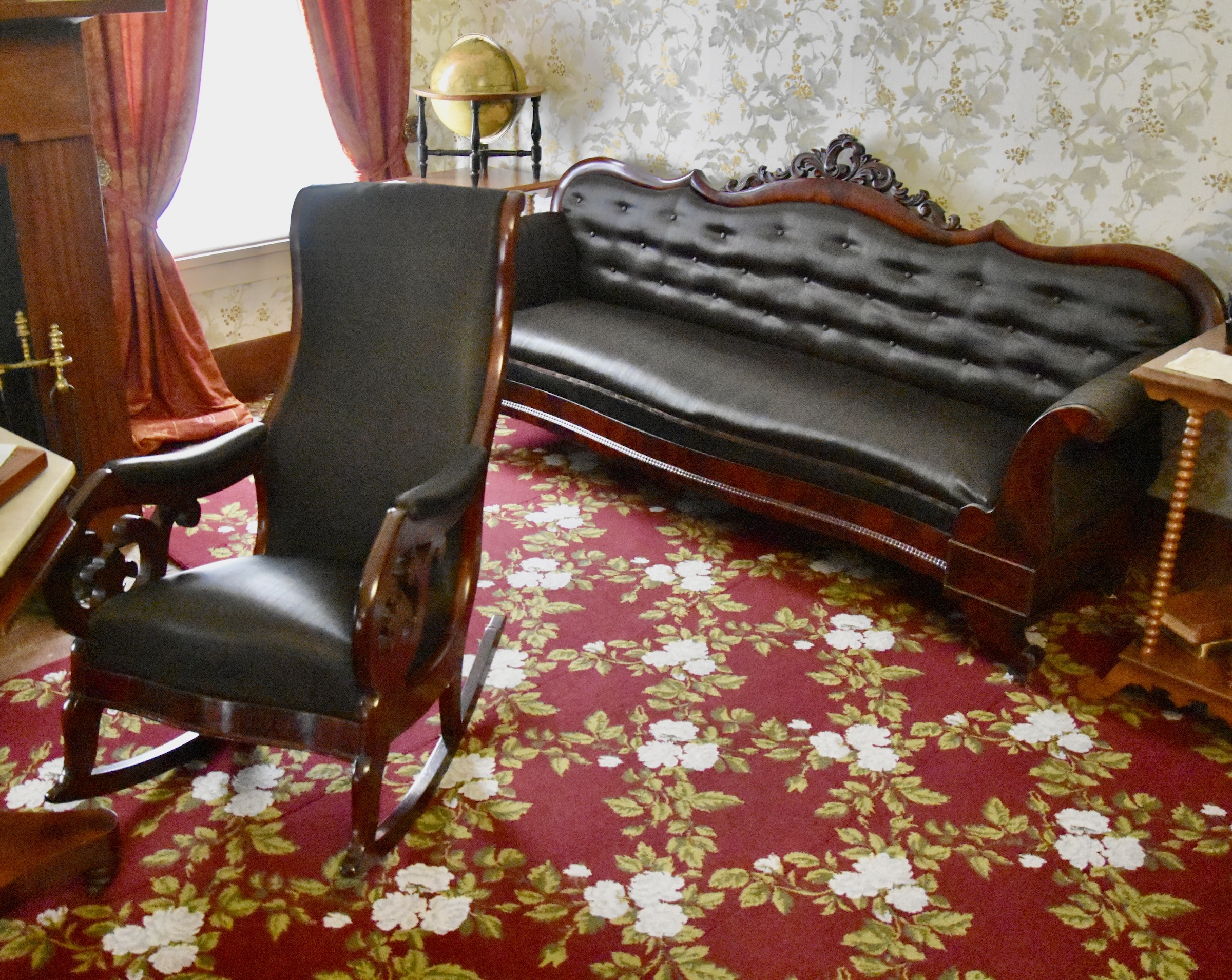
On the right side of the ground floor are the kitchen at the rear with this cast iron wood stove which Mary Lincoln liked so much she wanted to take it to the White House. Abe convinced her that there would be a suitable replacement in Washington.
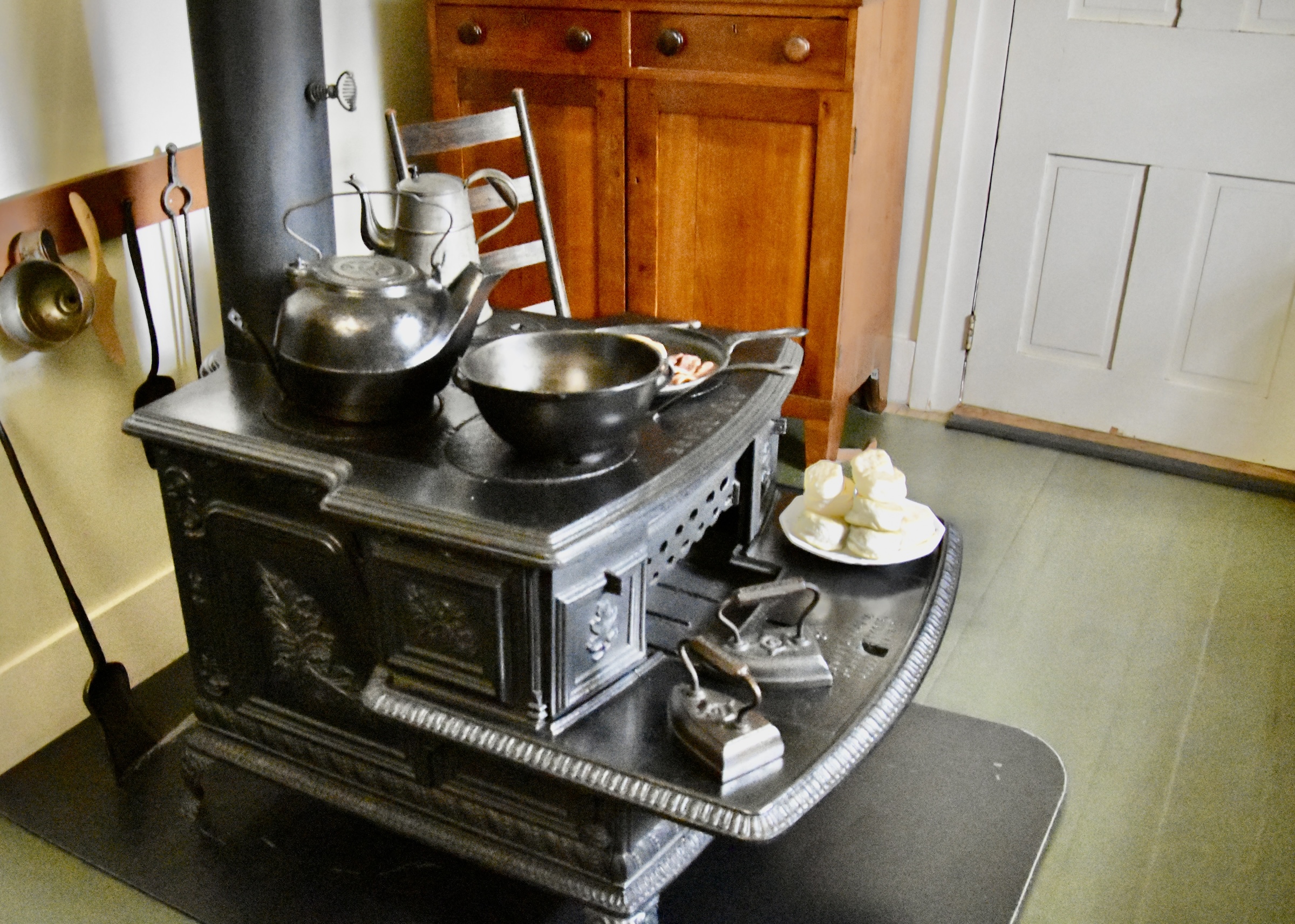
In the middle of the right side of the ground floor you find the dining room where the Lincoln’s ate their meals.
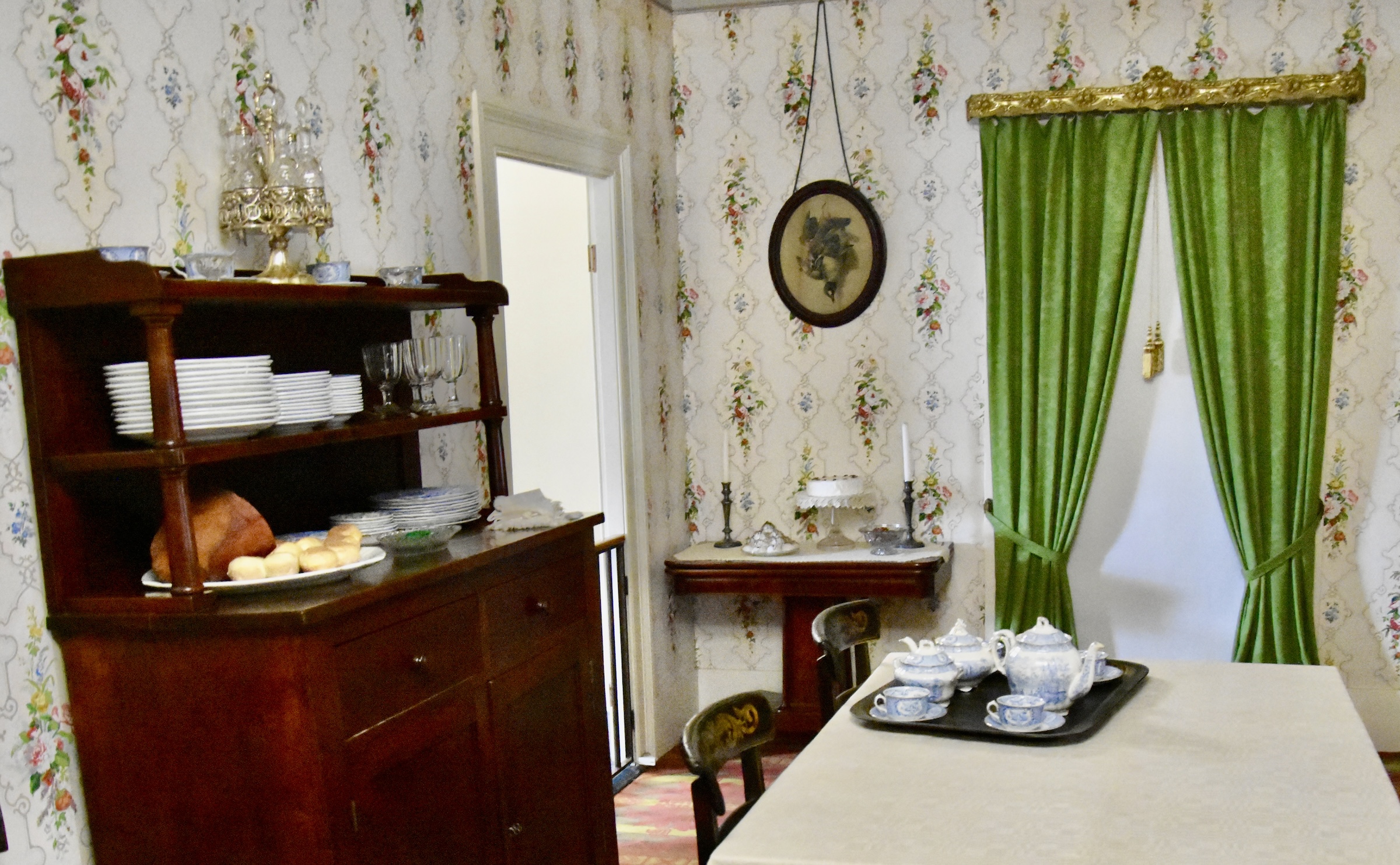
At the front of the right side of the Lincoln home is the sitting room which was reserved for family time. It has the most unusual Lincoln artefact which you can see atop the table below the print with the white horse. This is a stereoscope which would create 3D images similar to a modern Viewmaster of which, according to the NPS website, Niagara Falls and the Taj Mahal were the most popular sights. By 1850’s standards it cost a small fortune and according to our guide was more expensive than any other item in the Lincoln home.
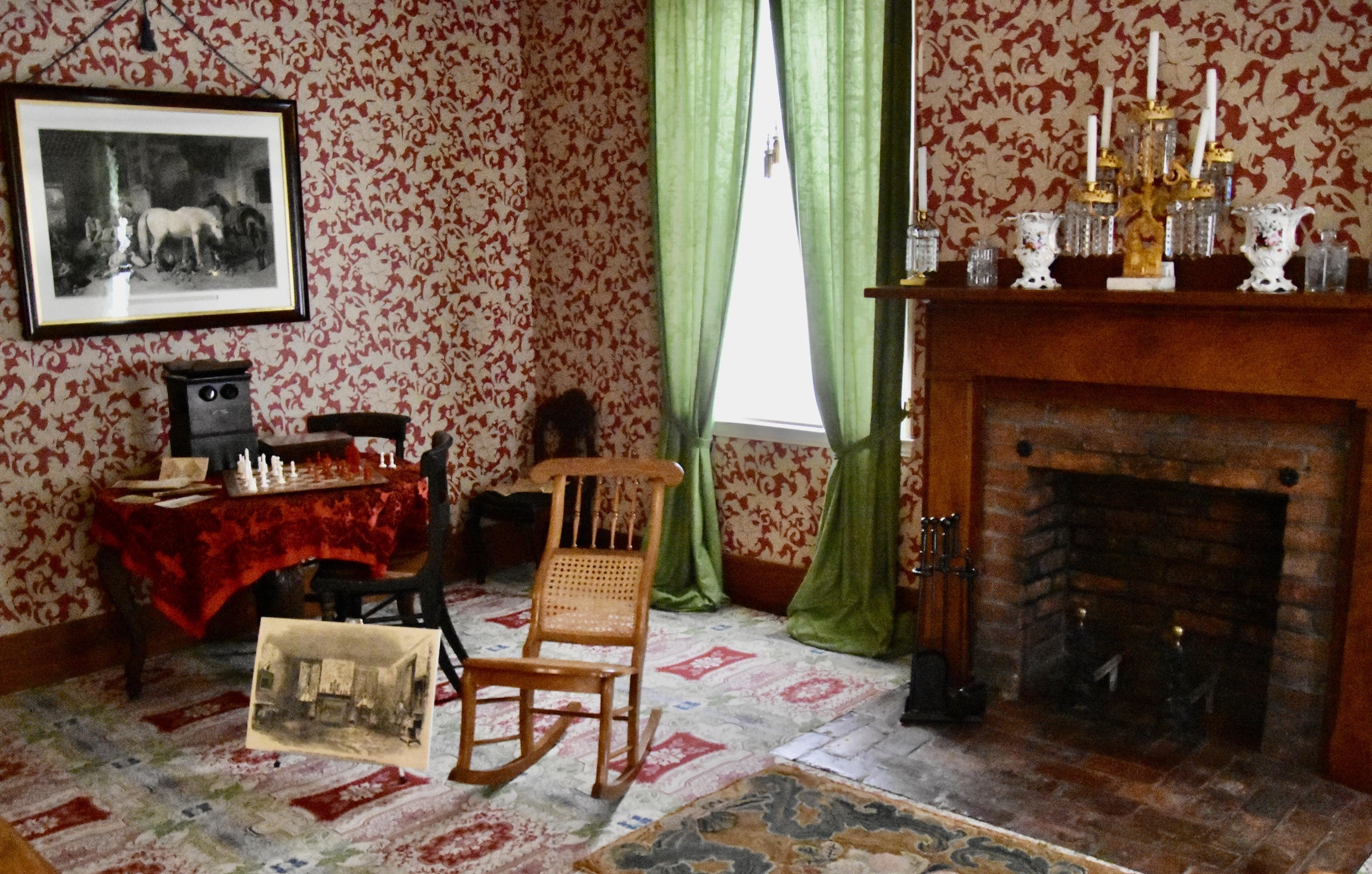
This is a photo of the sitting room taken from the opposite direction which shows the children’s chairs. Lincoln was a doting father and we were told would often wrestle on this floor with the boys, an image that contrasts with the dour image that comes through in his photographs and portraits.
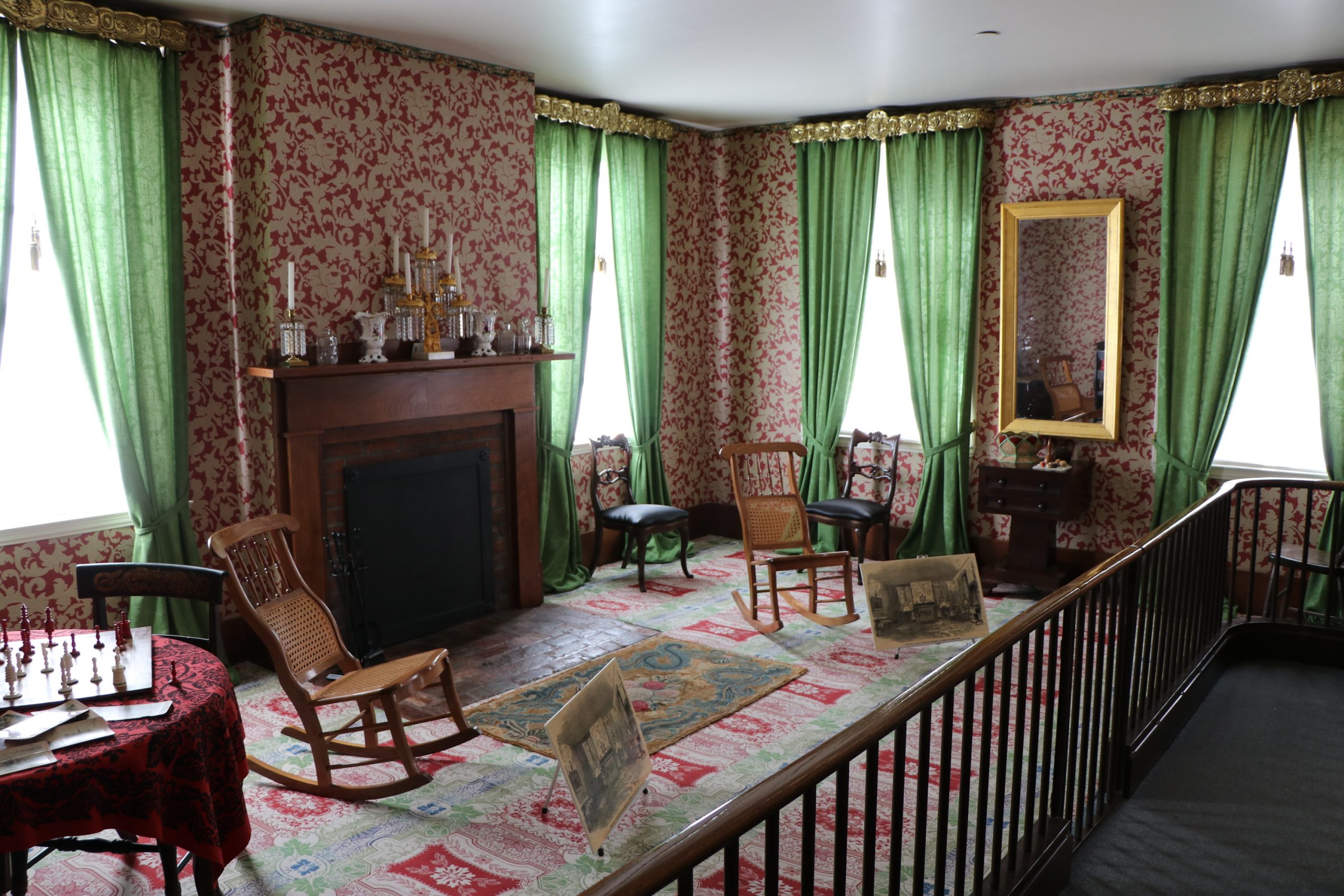
These are the stairs leading up to the second floor.
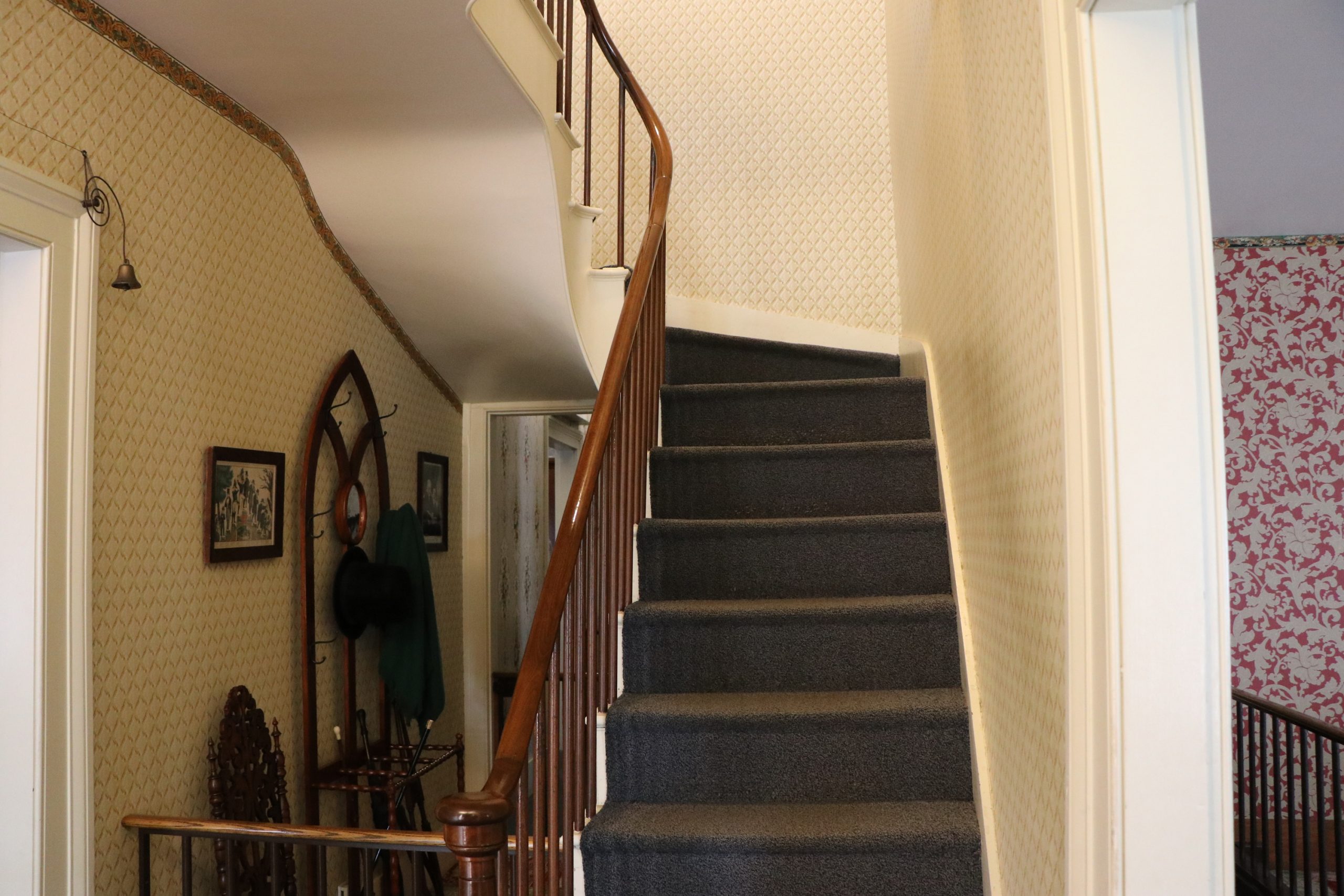
The upstairs of the Lincoln home has five bedrooms and what is described as a ‘trunk’ room. Three of the bedrooms are quite large and the other two very small. Abe and Mary slept in separate rooms which was not uncommon for the times. This is Abe’s bedroom with its pretty garish wallpaper. Unlike the Lincoln bedroom in the White House which is unabashedly available for occupancy by deep pocketed cronies of the President, this bed will never be occupied by anyone other than Lincoln’s ghost.
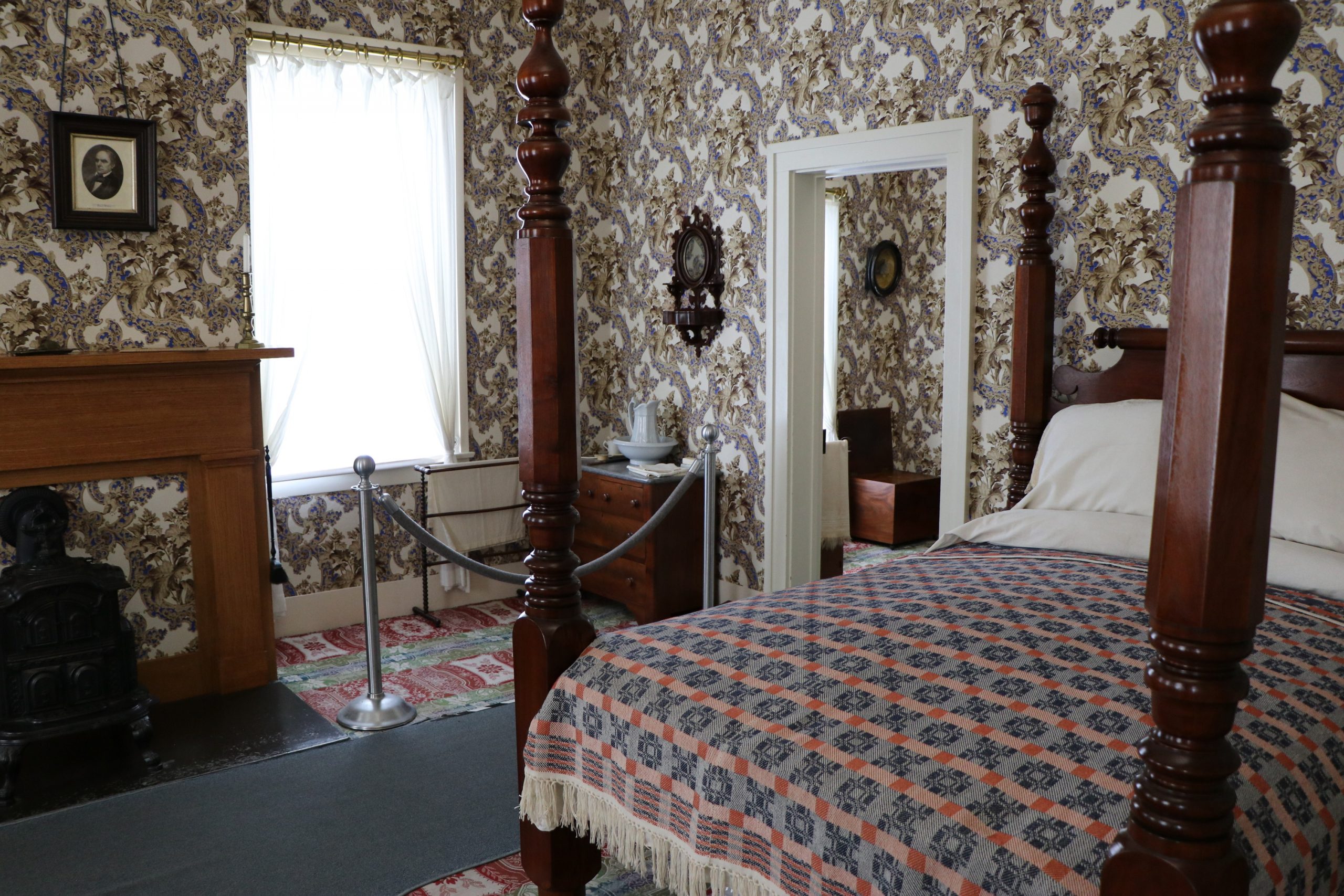
Next to it is Mary’s bedroom which has its own small stove.
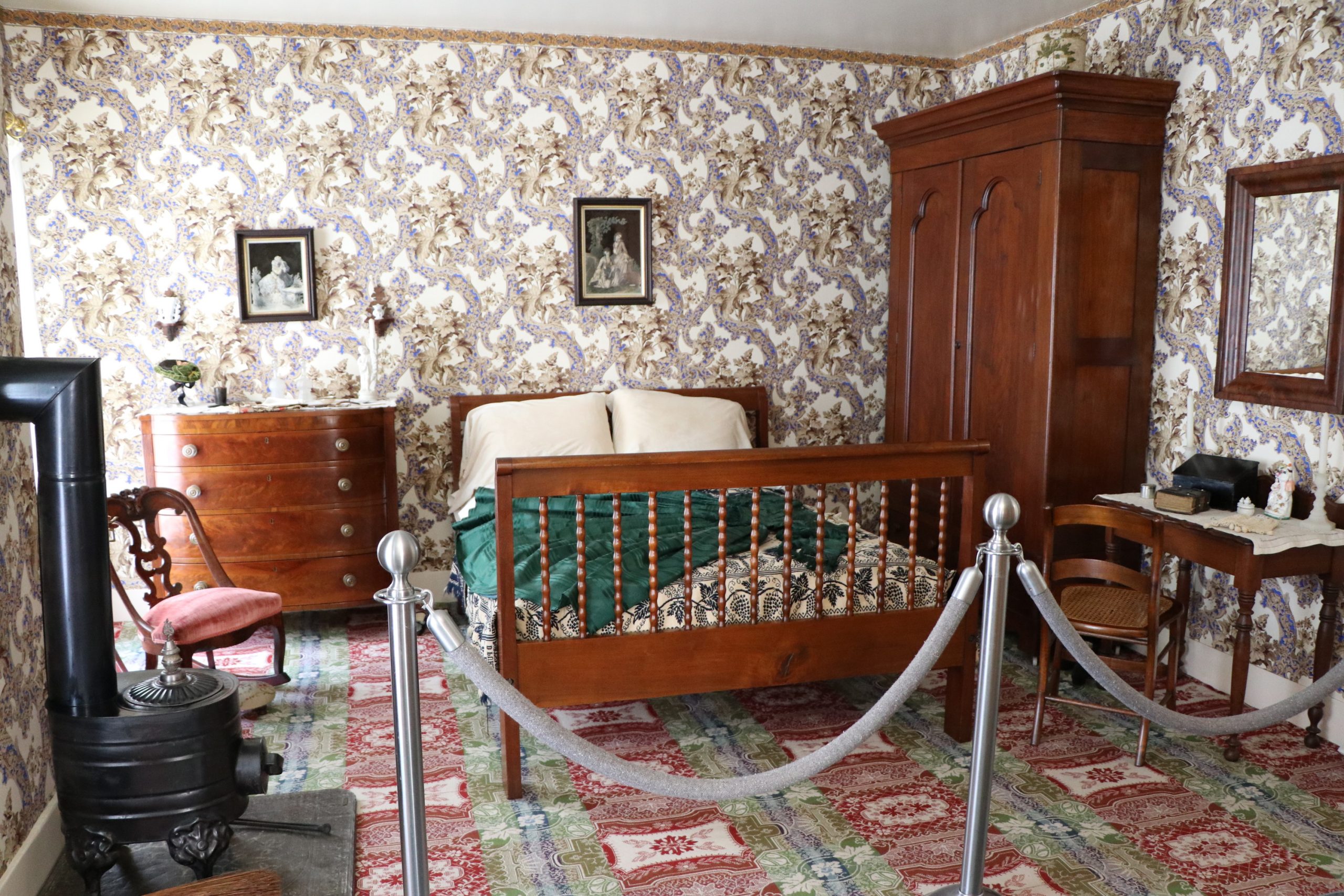
The third large bedroom was reserved for guests.
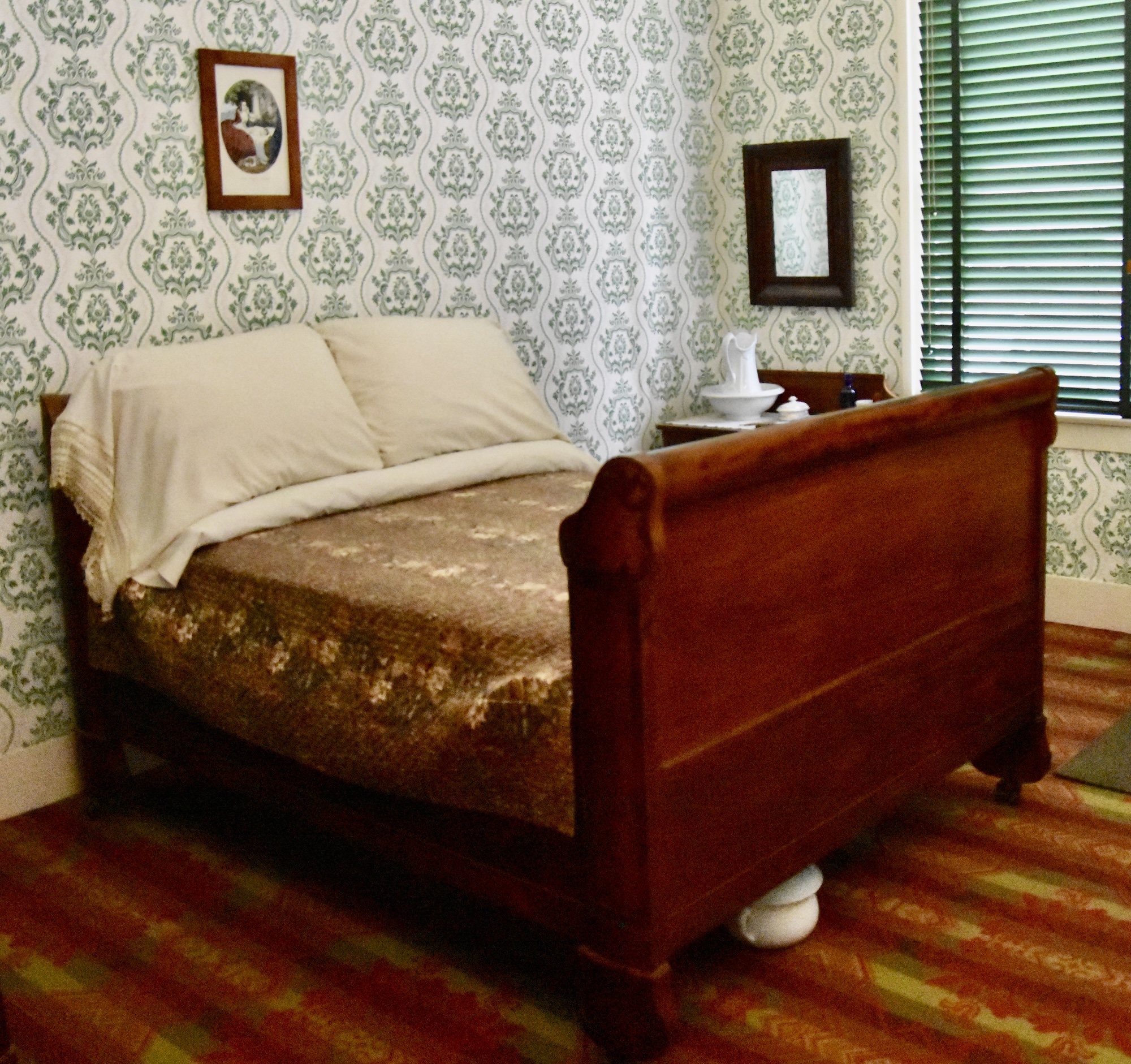
The boys were confined to this much smaller bedroom in the Lincoln home, but the bed is much wider than any of the other beds.
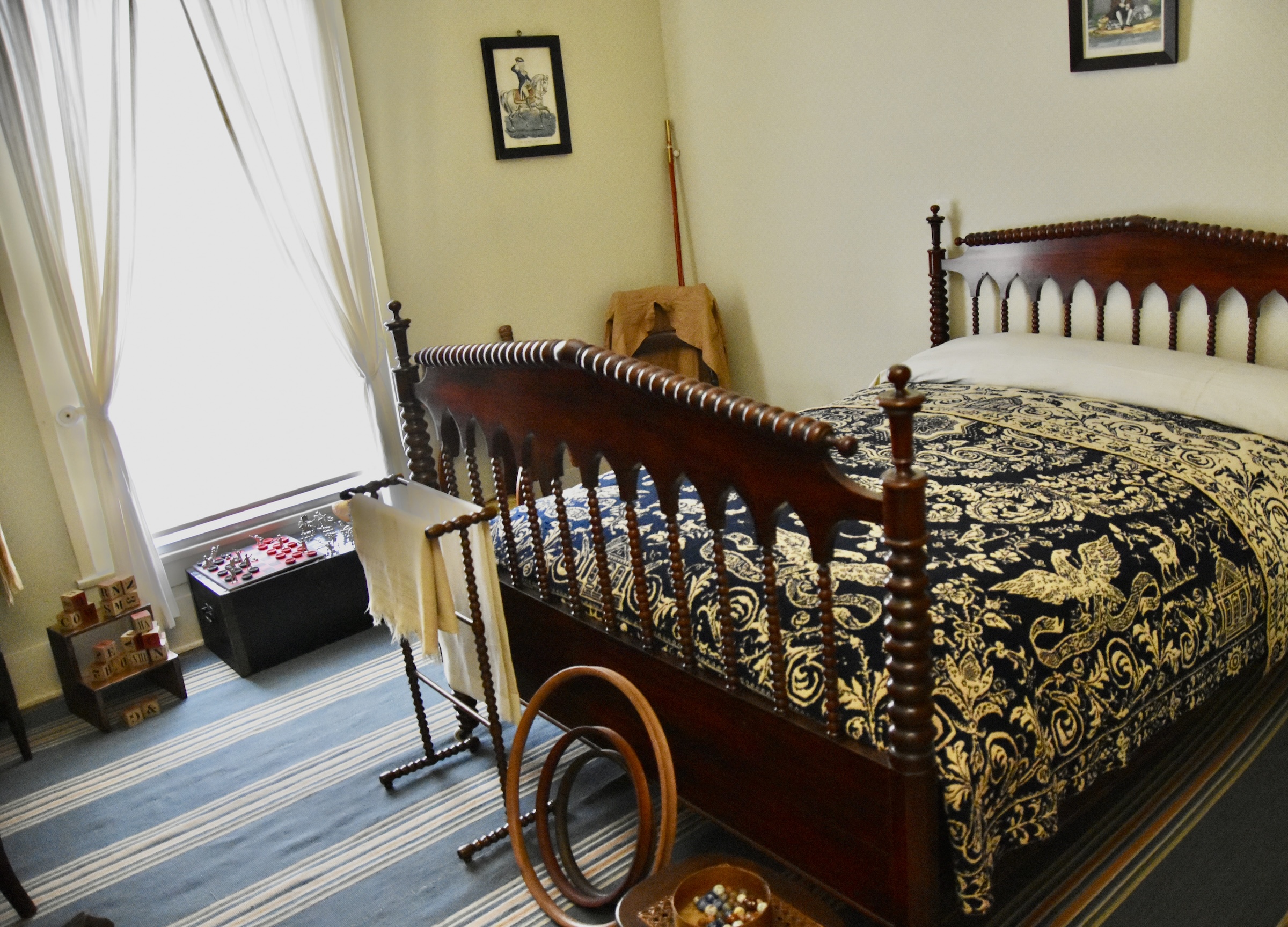
The last of the bedrooms was for the maid who helped with household chores and minding the children. Somehow the idea of the Lincoln’s having a maid seemed a bit incongruous with his image, but in the 1800’s, when families were much larger than today, most prosperous professionals would have had at least one.

That concludes the tour of the house, but not the Lincoln Home NHS. As noted, the entire neighbourhood has been preserved and visitors will spend at least as much time wandering around it as they will in the Lincoln home. We did not have time to go inside any of the other three homes that are open to the public, but I did take photos of them all which are included in this gallery. Double click to open one and double click again to enlarge it.
Aside from the other homes, there are about a dozen interpretive panels and this election cart in the shape of the log cabin associated with Abe’s humble beginnings in Kentucky. However, as we know now after our tour of the Lincoln home, by 1860 the Lincoln’s were a prosperous and well respected professional family aptly suited to a higher destiny.
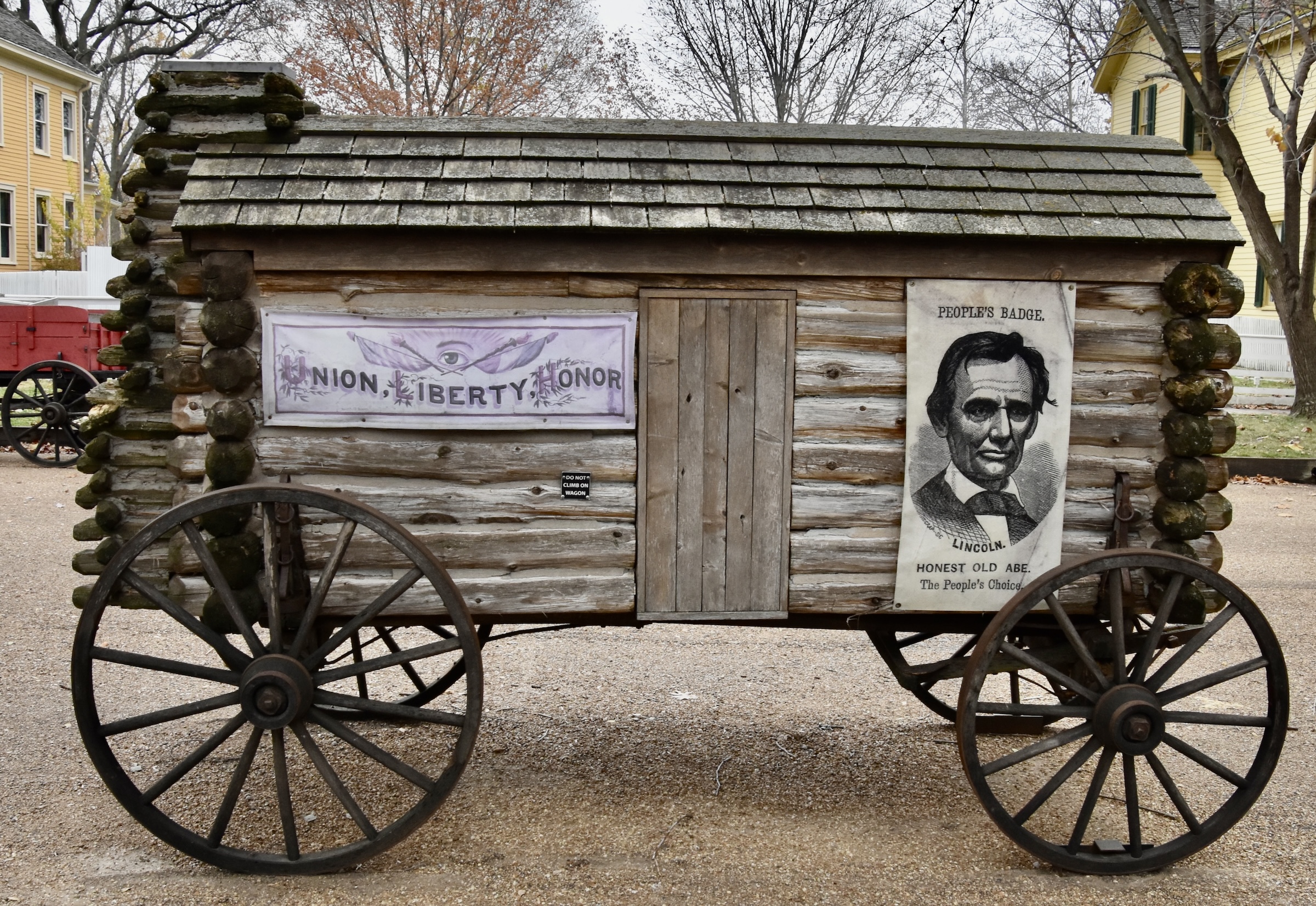
Lincoln’s Tomb
There are a number of other Lincoln sites in the Springfield area including the Presidential Museum, the Presidential Library and the Lincoln Depot from whence he departed for Washington. There is also the Lincoln-Herndon Law Offices, but like the old state capitol building, it is currently closed for renovations. Once these are open again there is more than enough reason to return for second visit, but for now we will only have time for a quick stop at Lincoln’s tomb and monument which is located in Oak Ridge Cemetery on the outskirts of the city.
After his assassination, Lincoln’s body was brought back to Springfield where, after lying in state at the capitol building, it was placed in a vault in Oak Ridge Cemetery where it lay for six years before being moved into its final resting place in the Lincoln Tomb. Funds for the tomb were raised through public donations which resulted in it taking five years to complete, from 1869 to 1874. Lincoln was moved inside in 1871 along with his son Eddie who had died in 1850 and Willie who died in 1862 in the White House. A third son, Tad died in 1871 and joined his father and two siblings. The only one of the four Lincoln sons to reach adulthood was Robert Todd Lincoln who lived until 1926 and is buried in Arlington National Cemetery.
The last person interred in the Lincoln Tomb was Mary who died in 1882 at the age of 63.
This is a public domain photo of the Lincoln Tomb. On the day we arrived there was a team sandblasting it and effectively blocking the view of the top half.
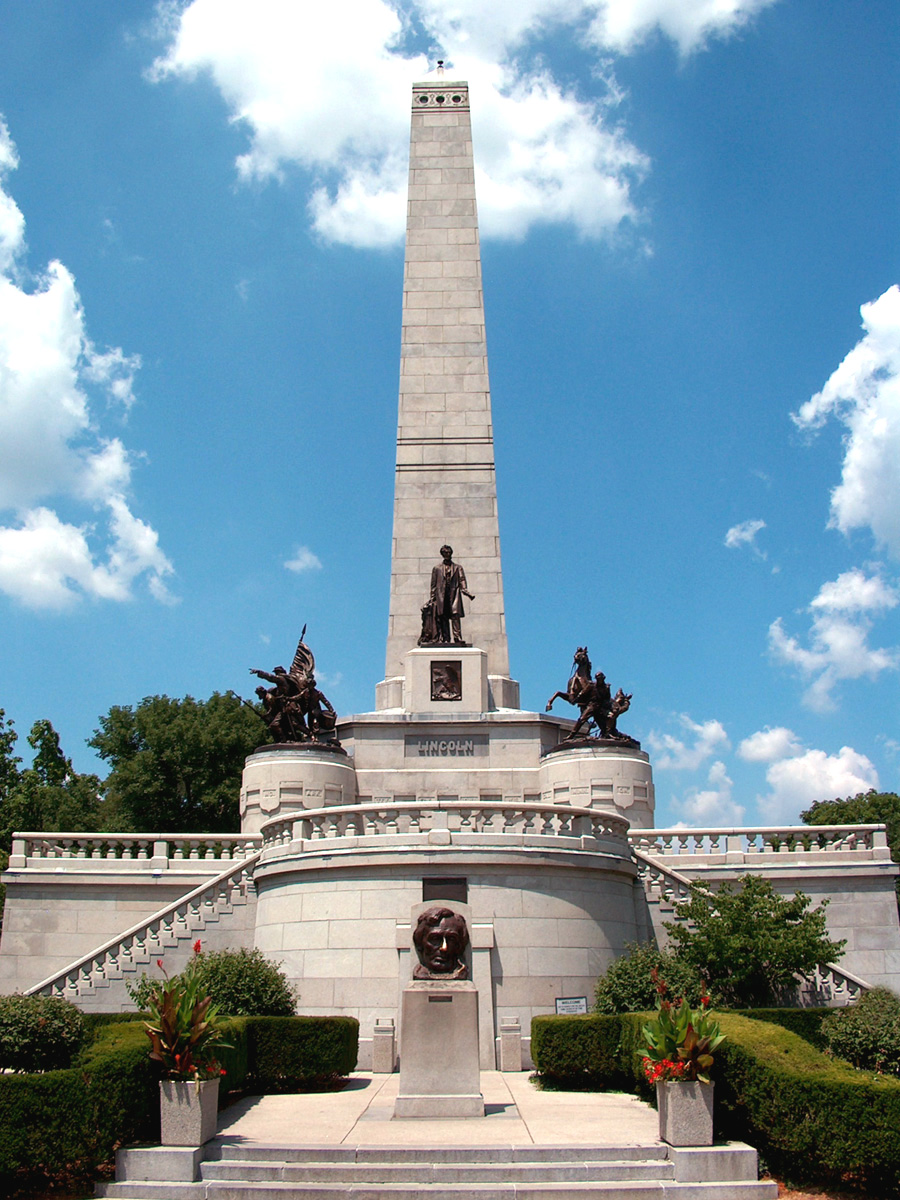
This is my photo of the lower half of the tomb. There are four military statues around the base of the tomb representing the infantry, cavalry, artillery and navy. In this photo the infantry is on the left and cavalry on the right.
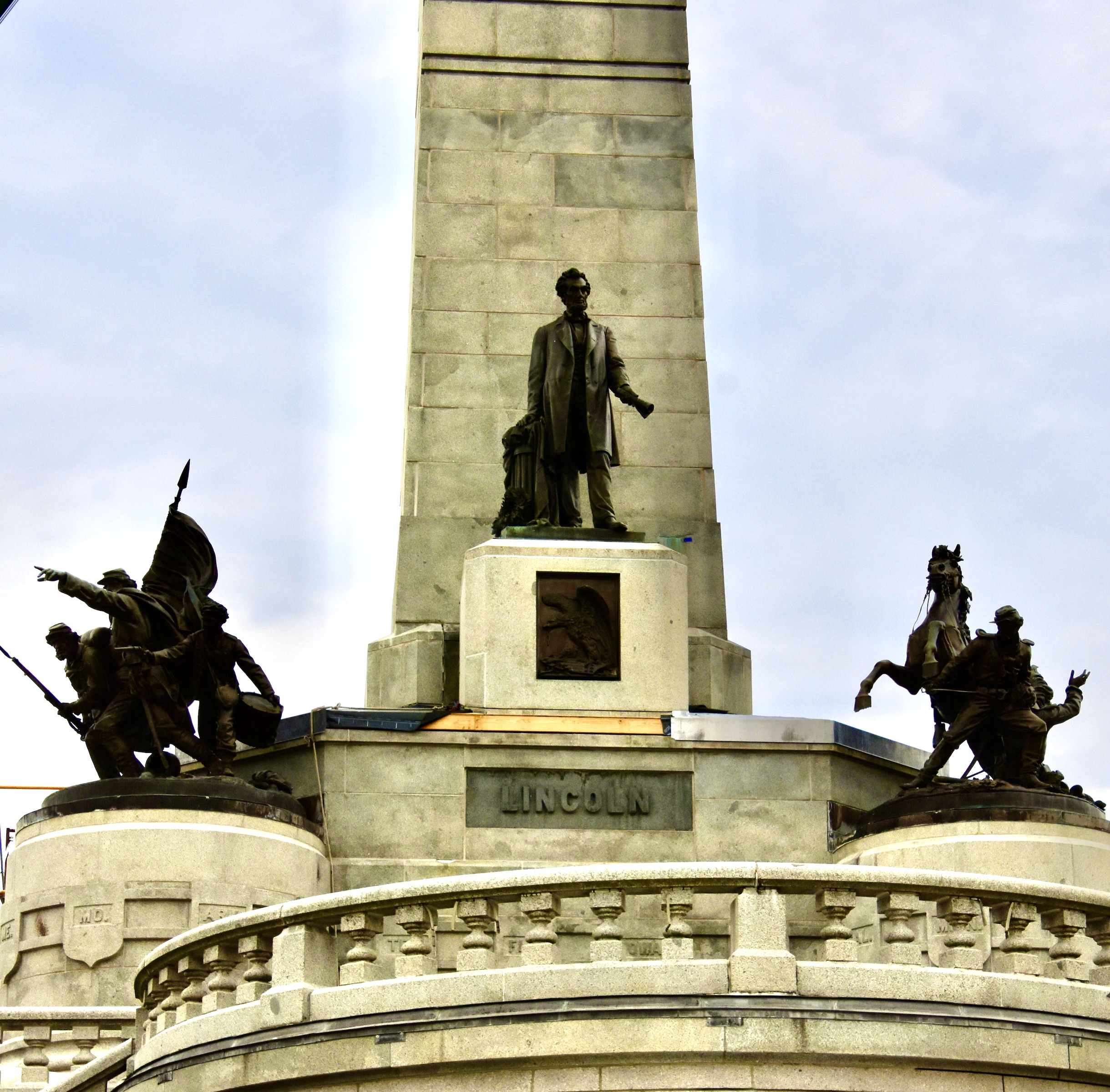
In front of the tomb is this wonderful bronze bust of Lincoln which is a replica of the marble statue by sculptor Gutzon Borglum found in the U.S. Capitol Building. In case Borglum’s name rings a bell, he was the man responsible for creating the four heads on Mount Rushmore.
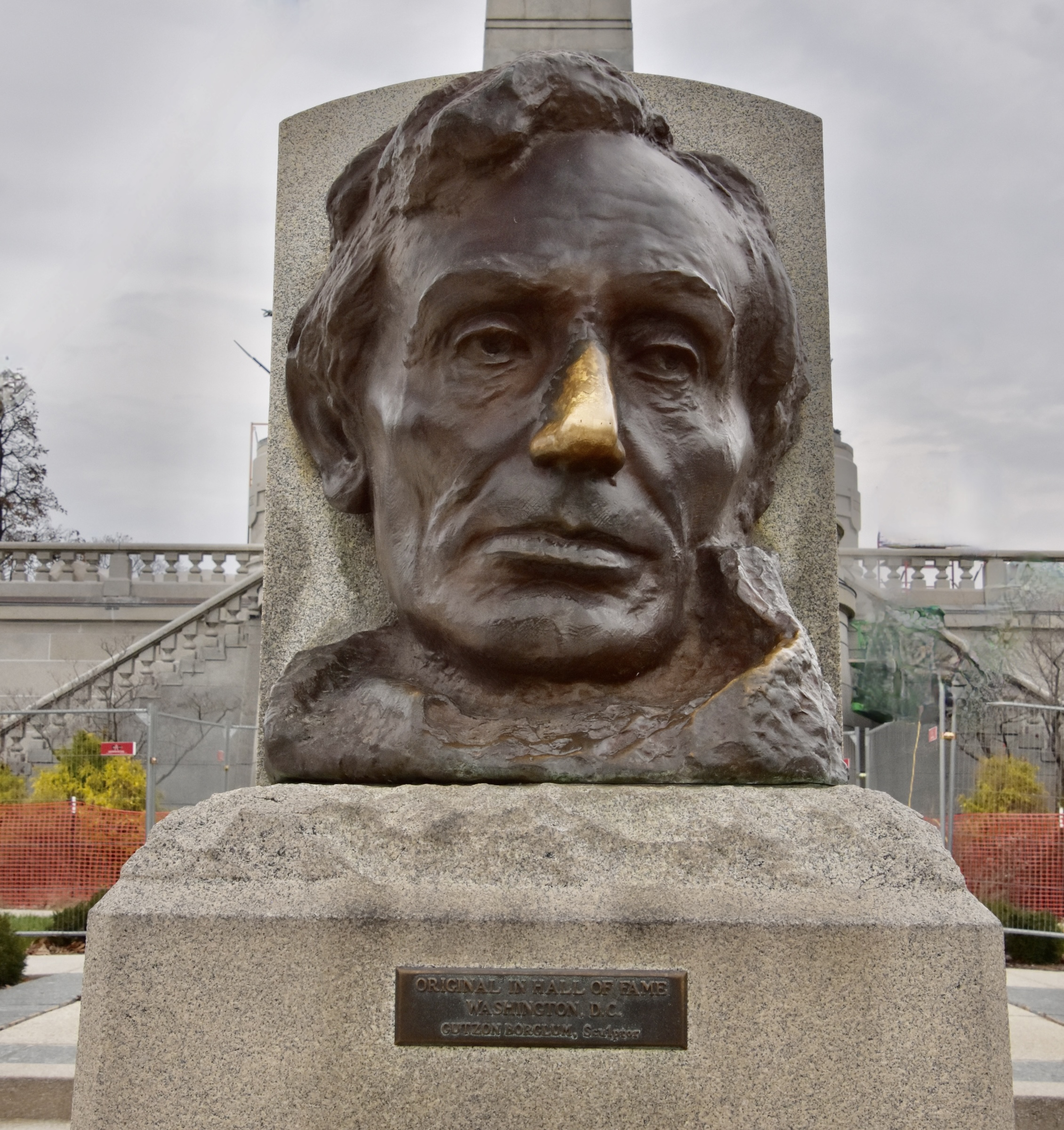
On that note we’ll say goodbye to this greatest of Republican president’s and hope that we will see his likes once again, but it certainly will not be as a Republican.
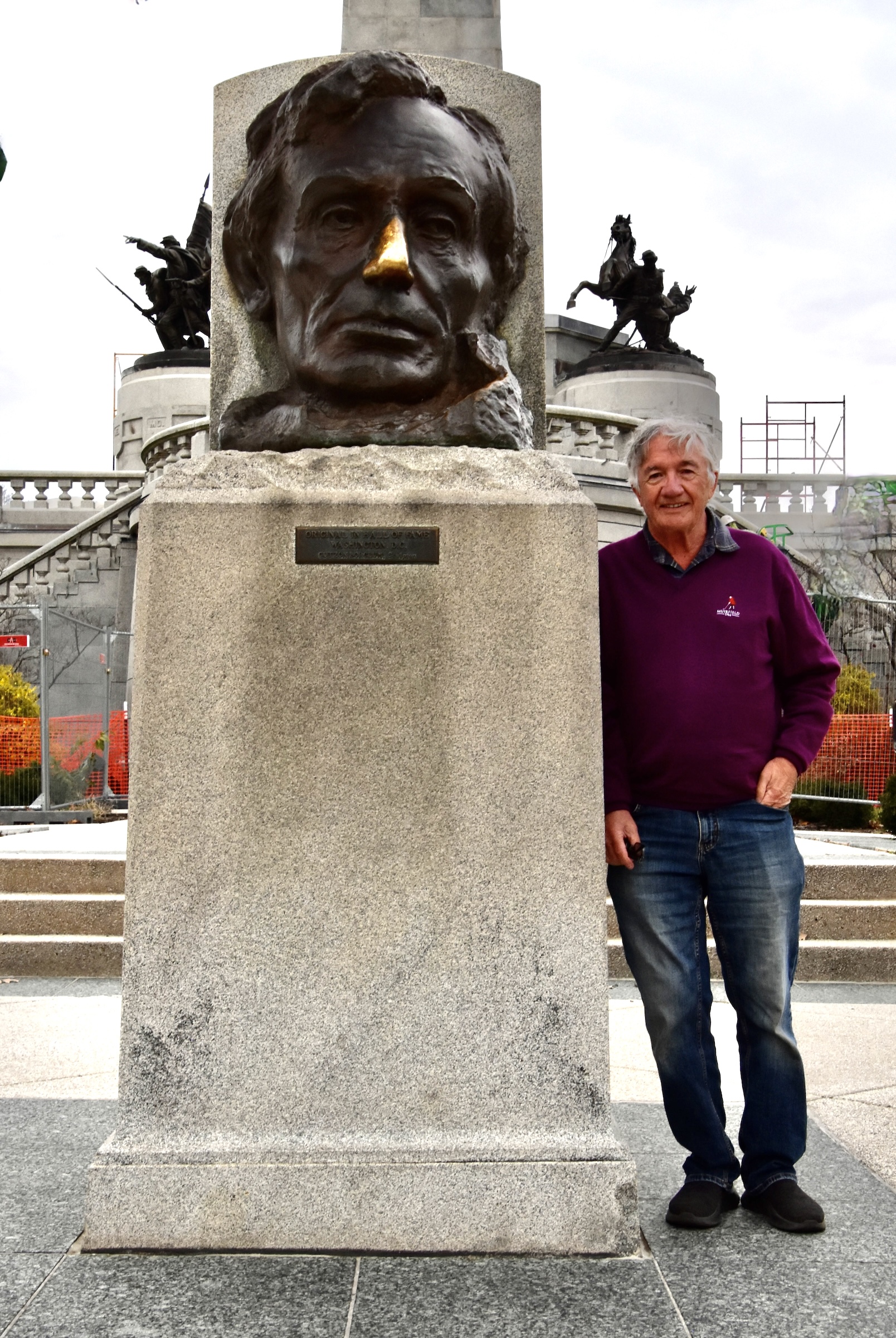
Our final stop on this, hopefully not final visit, to this once great country, will be in the great city of Chicago. I hope we’ll see you there.


